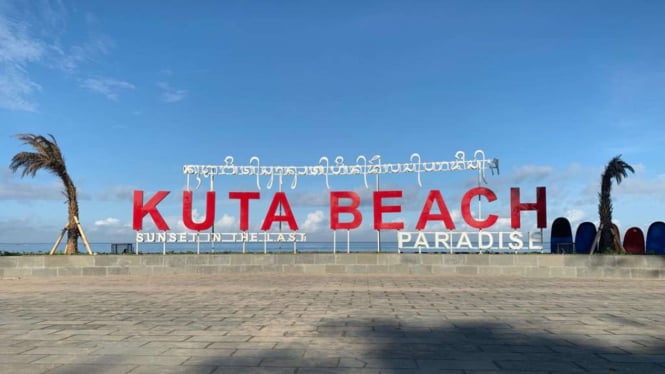Beauty Philippines: Embracing the Unique and Diverse World of Filipino Beauty
Introduction
The Philippines, a tropical paradise known for its stunning landscapes and warm-hearted people, is also a country with a rich tapestry of beauty traditions. Filipino beauty is as diverse as the nation's vibrant culture, drawing inspiration from indigenous practices, Spanish influences, and modern global trends. In this article, we'll explore the world of beauty Philippines and discover the secrets, trends, and unique approaches that make it a captivating hub of beauty like no other.
1. Indigenous Beauty Traditions
Indigenous beauty traditions are an integral part of Filipino culture. These practices are deeply rooted in the country's history and heritage, often using natural resources and techniques passed down through generations. Indigenous beauty rituals showcase the intimate connection between the Filipino people and their environment.
Indigenous Beauty Practices:
a. Traditional Tattoos: Indigenous tribes use tattooing to tell stories, mark rites of passage, and celebrate their identity. b. Natural Skin Remedies: Natural ingredients like coconut oil, aloe vera, and rice water are used for skincare and haircare. c. Indigenous Healers: Traditional healers, known as albularyos, use herbal medicine and spiritual practices for holistic wellness.
2. Spanish and Colonial Influences
The Philippines has a complex history of colonial rule, including nearly 400 years under Spanish influence. This period greatly impacted the local beauty culture, introducing elements like Catholicism, European-style clothing, and a fusion of traditional practices with Spanish aesthetics.
Spanish Influences on Filipino Beauty:
a. Marian Devotion: The veneration of the Virgin Mary, particularly through processions, has influenced beauty ideals, emphasizing purity and modesty. b. Baro't Saya: The traditional Filipiniana dress, known for its elegant butterfly sleeves, reflects a fusion of indigenous and Spanish styles. c. Skin Lightening: The concept of mestiza beauty, with fair skin as the ideal, was introduced during the colonial period.
3. Natural Ingredients and Homemade Remedies
Filipino beauty often relies on natural ingredients and homemade remedies. Many Filipino households and local beauty entrepreneurs create their skincare and haircare products using readily available resources. These natural remedies are affordable and effective.
Popular Natural Ingredients:
a. Coconut Oil: Coconut oil is a versatile beauty product used for moisturizing skin and hair. b. Calamansi: The Filipino lime, calamansi, is used for its natural skin brightening properties. c. Papaya: Papaya is known for its skin-smoothing and exfoliating qualities.
4. The K-Pop and K-Beauty Craze
While traditional Filipino beauty practices hold strong, the K-Pop (Korean Pop) and K-Beauty (Korean Beauty) trends have taken the nation by storm. Filipino beauty enthusiasts are embracing Korean skincare routines, makeup styles, and products, reflecting a desire for a radiant and youthful appearance.
Filipino K-Beauty Enthusiasts:
a. Multi-Step Skincare: The famous Korean skincare routine, consisting of multiple steps, has gained popularity in the Philippines. b. K-Drama Influence: Korean dramas and celebrities have a significant impact on beauty trends and fashion. c. Korean Products: Korean skincare and makeup products are widely available in the Philippines.
5. Beauty Pageants and the Philippines
The Philippines is renowned for its remarkable success in international beauty pageants, including Miss Universe and Miss World. The nation's fascination with beauty pageants has influenced beauty ideals and fashion trends, promoting confidence and self-expression.
The Influence of Beauty Pageants:
a. Confidence and Empowerment: Beauty pageants empower Filipinos, especially women, to embrace their beauty and confidence. b. Fashion and Style: Beauty queens are often style icons, influencing fashion trends and makeup styles. c. Advocacy and Social Impact: Beauty pageants in the Philippines emphasize social responsibility and advocacy work.
6. Filipino Natural Beauty Tourism
The Philippines is known for its natural beauty, and this extends to its eco-tourism and wellness offerings. Natural beauty tourism in the country allows travelers to connect with nature while indulging in wellness treatments and rejuvenation in stunning environments.
Natural Beauty Experiences:
a. Spa Retreats: The Philippines offers spa retreats in picturesque settings, combining traditional and modern wellness practices. b. Wellness in Nature: Wellness activities are often incorporated into natural settings, including yoga on the beach and meditation in the rainforest. c. Eco-Friendly Beauty: Eco-conscious travelers can explore eco-friendly beauty products and practices.
Conclusion
Beauty Philippines is a testament to the nation's rich and diverse culture. It reflects the seamless fusion of indigenous traditions, colonial influences, natural remedies, global trends, and a vibrant beauty pageant scene. The Filipino people have a deep appreciation for the beauty of their homeland and a passion for celebrating their unique and diverse beauty heritage.



.jpg)

No comments:
Post a Comment